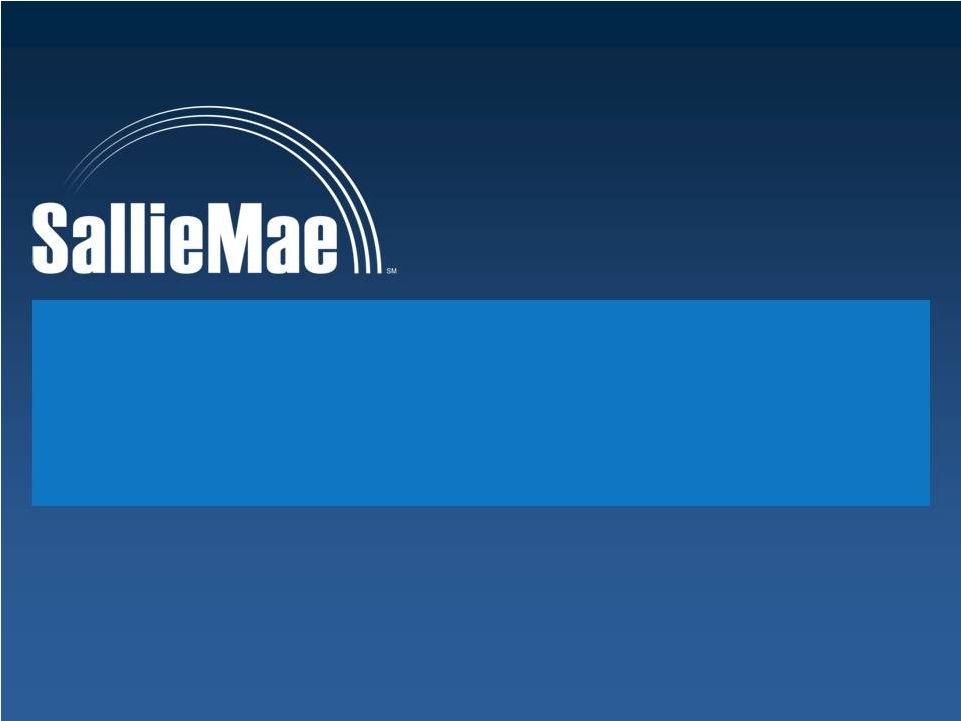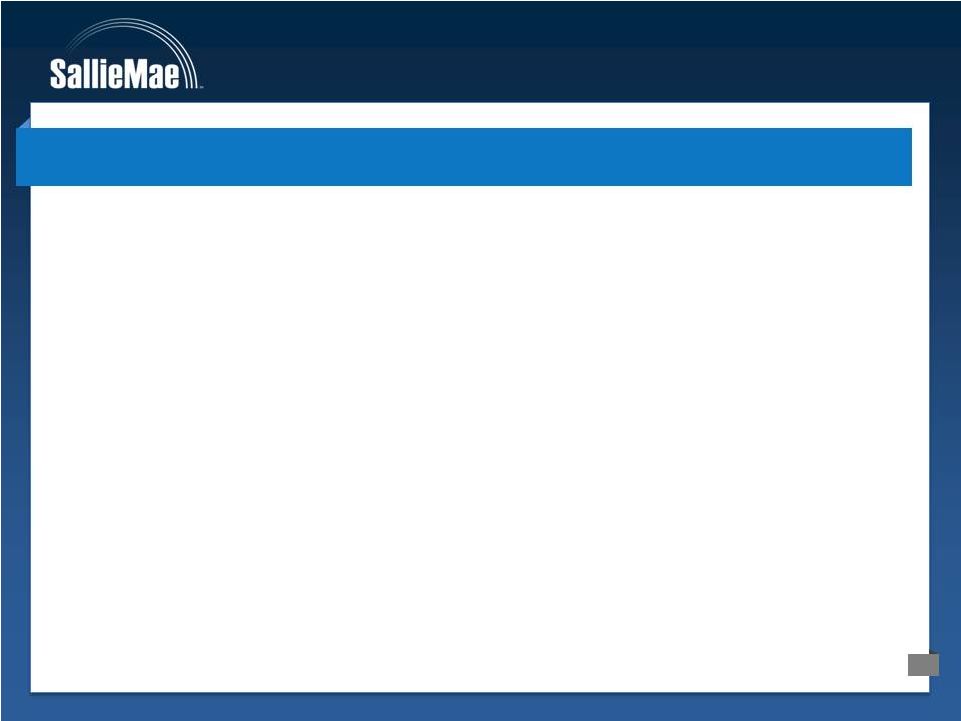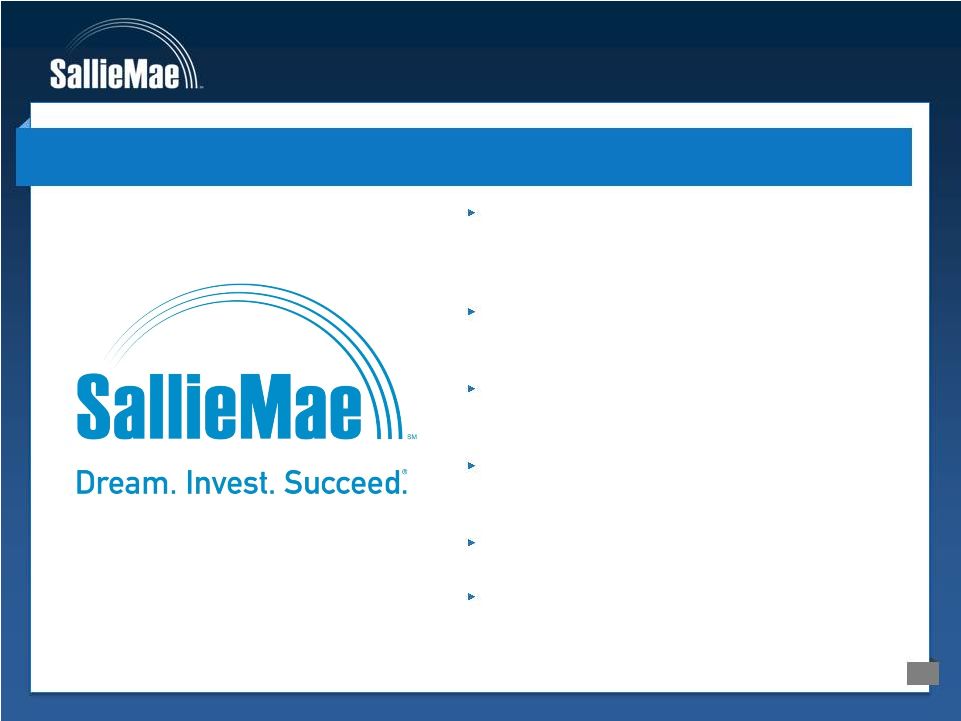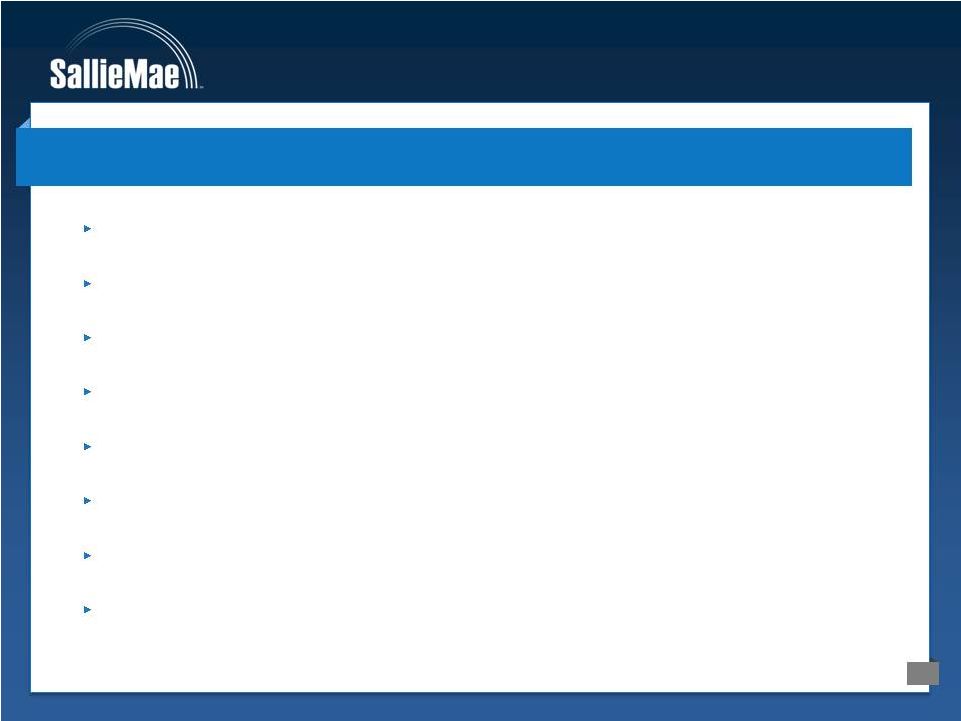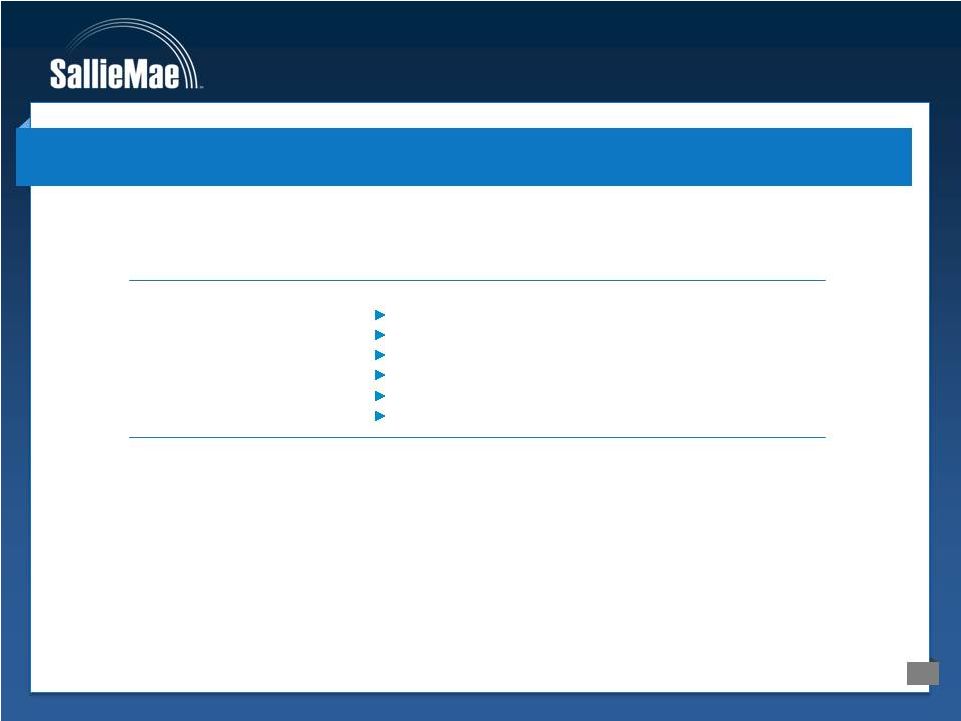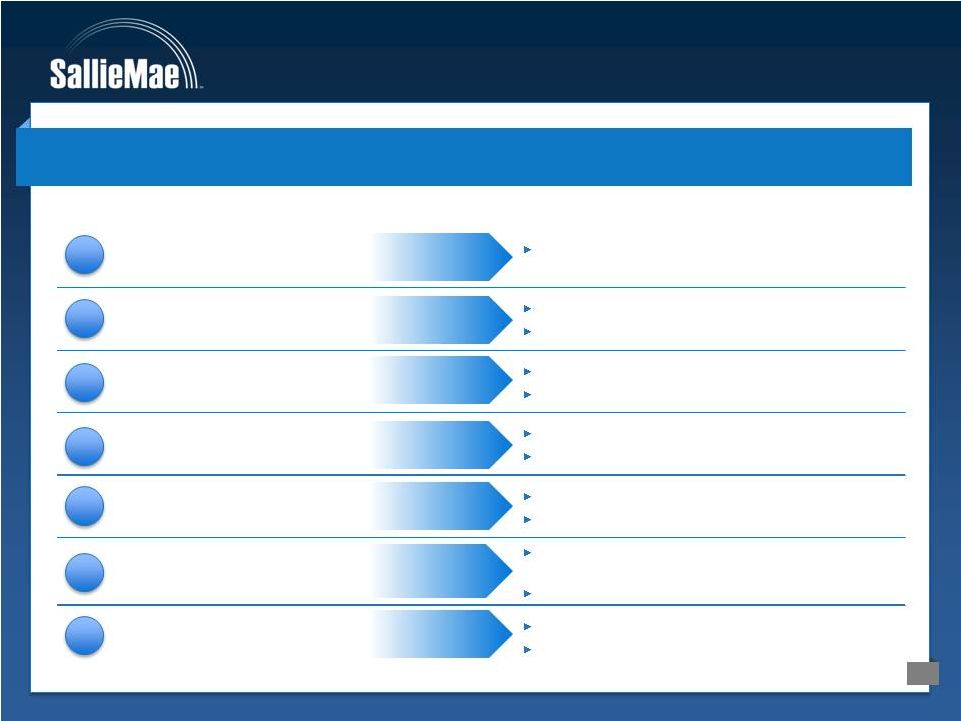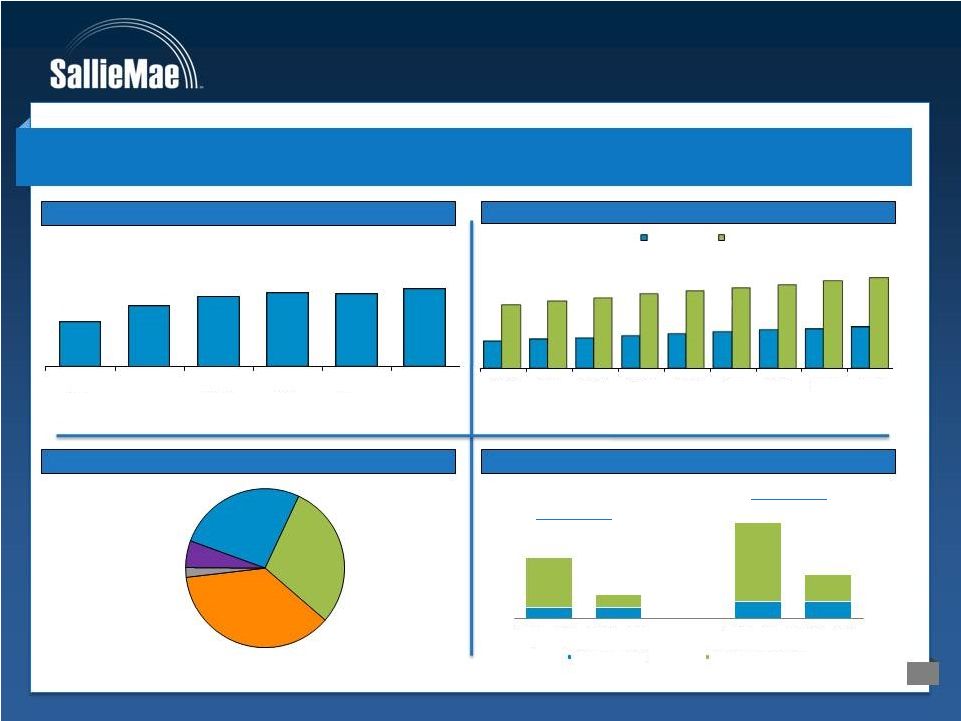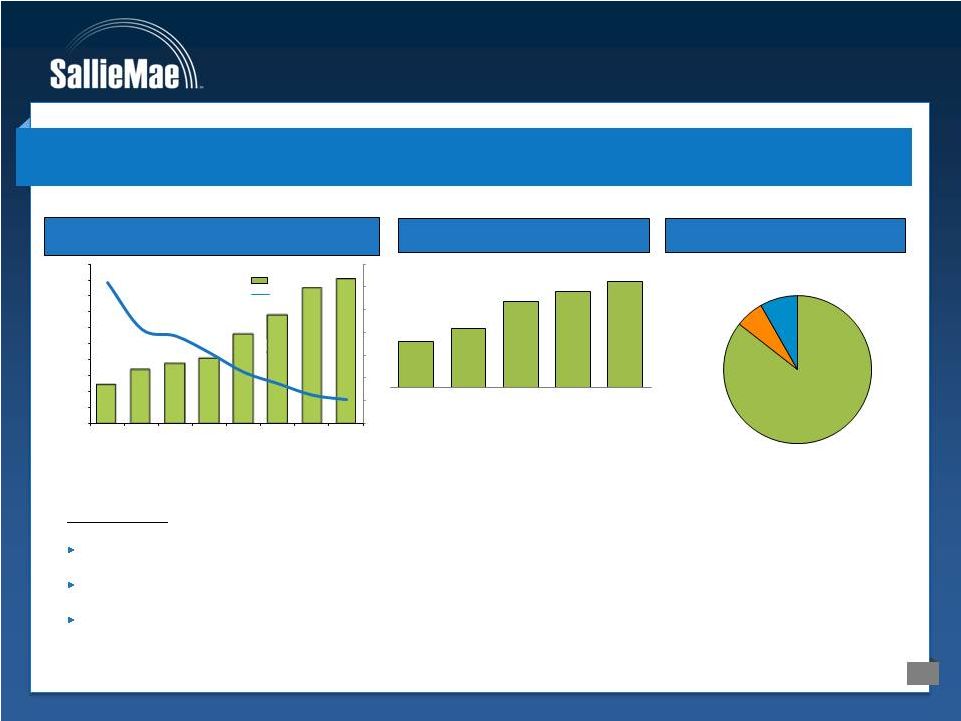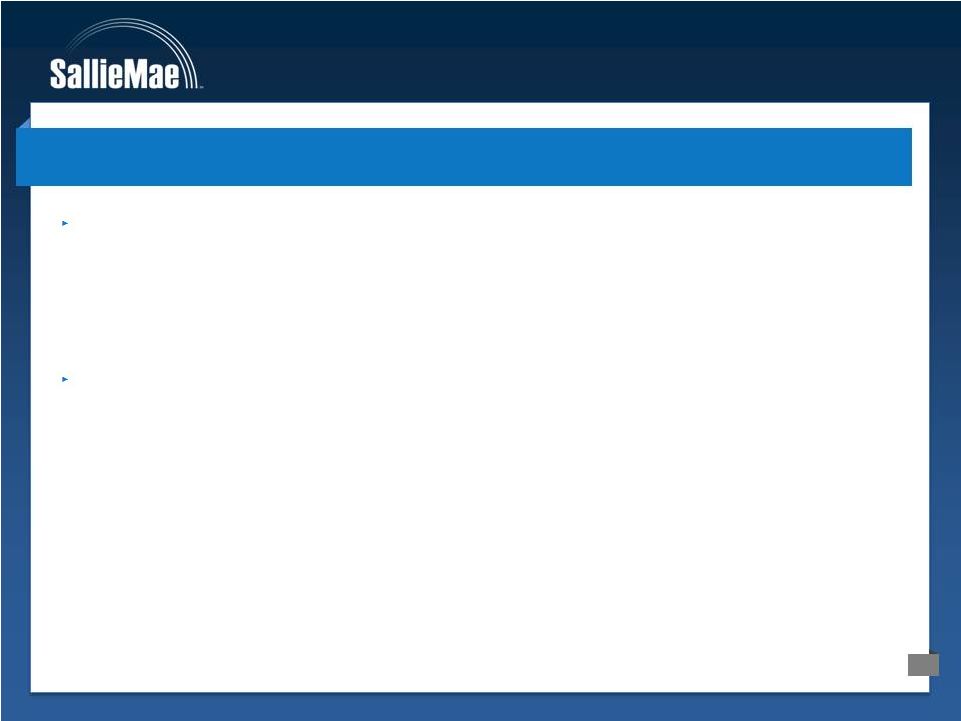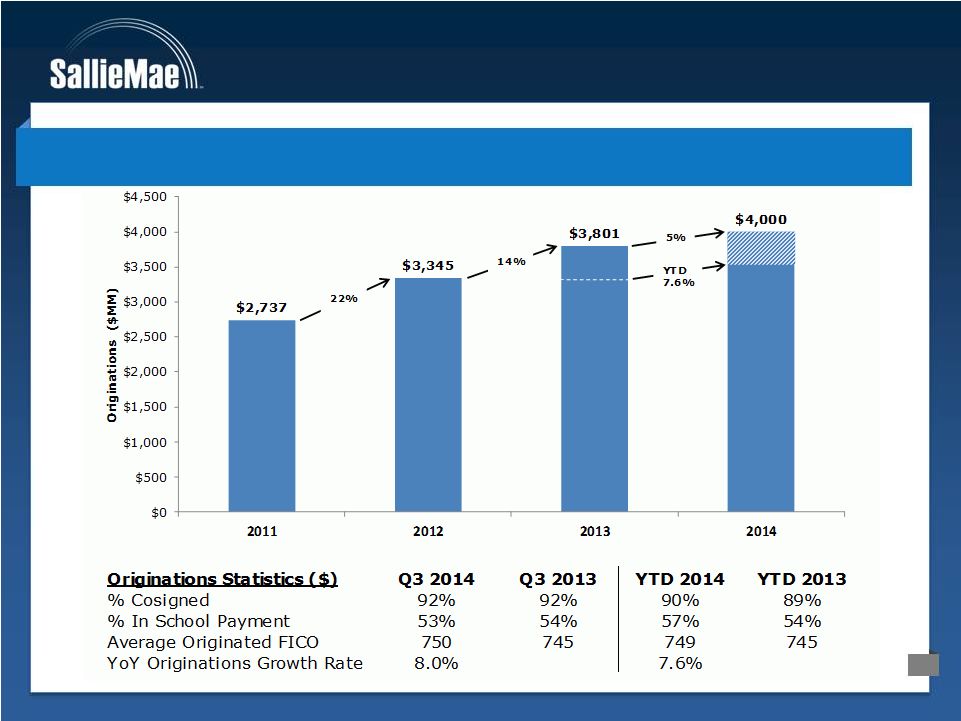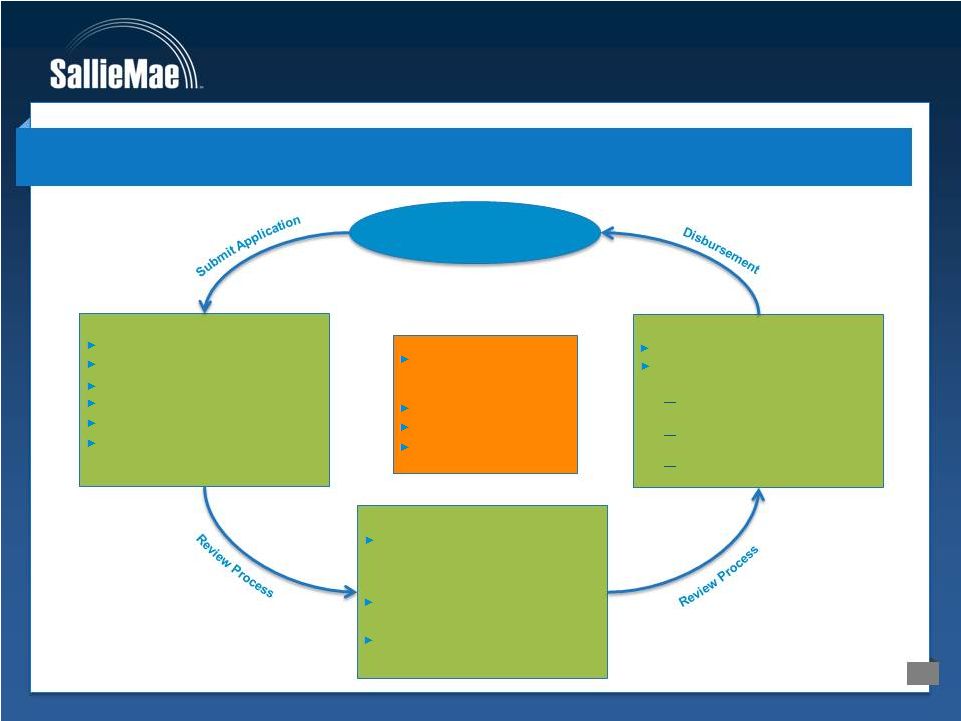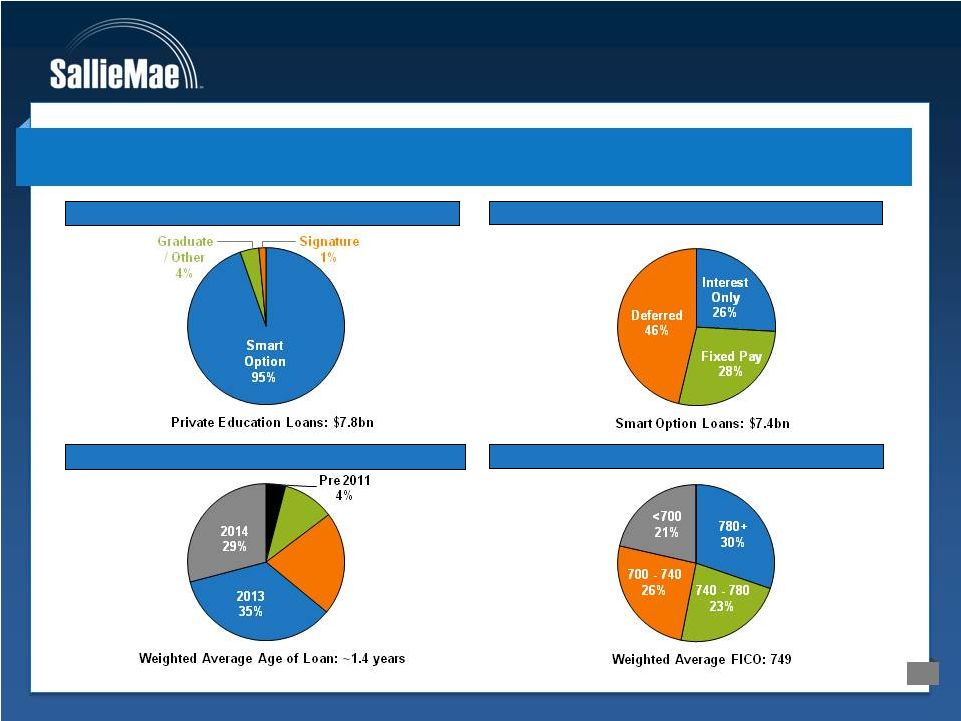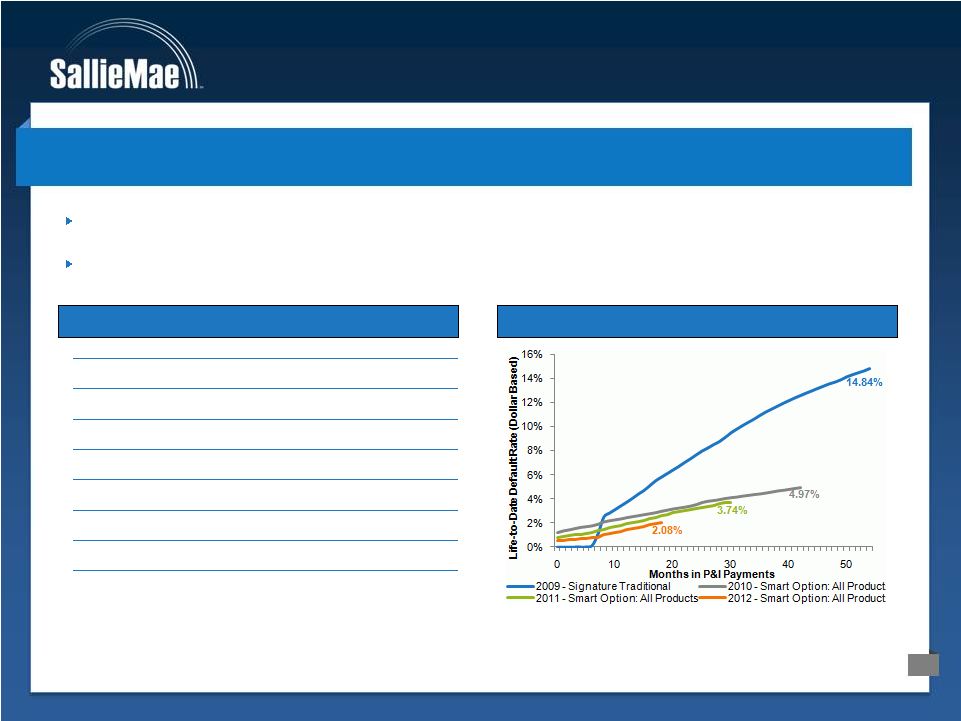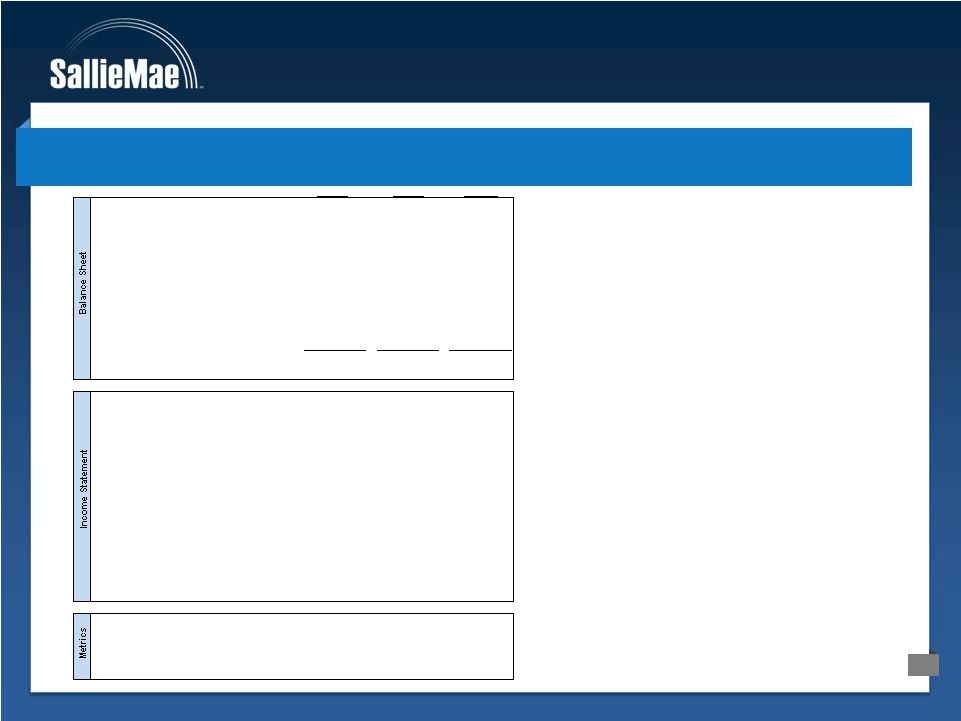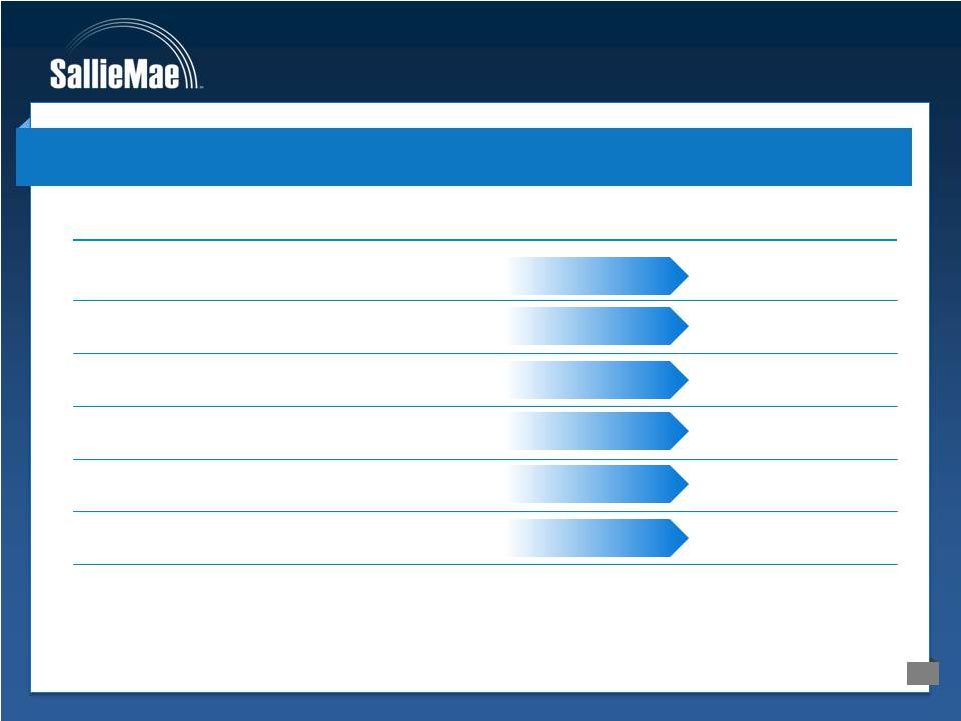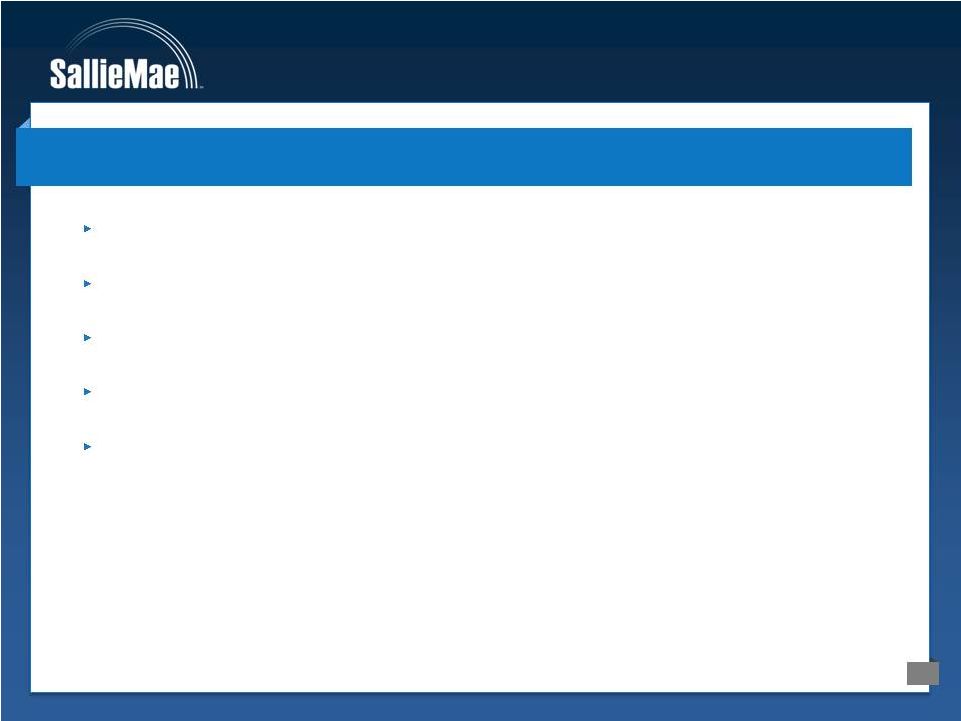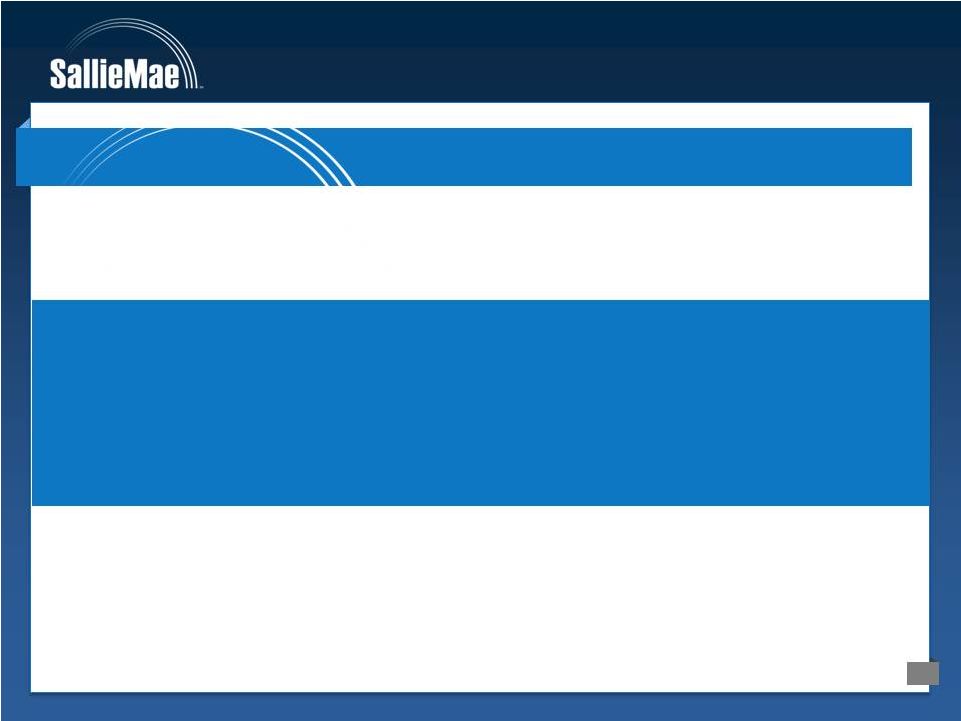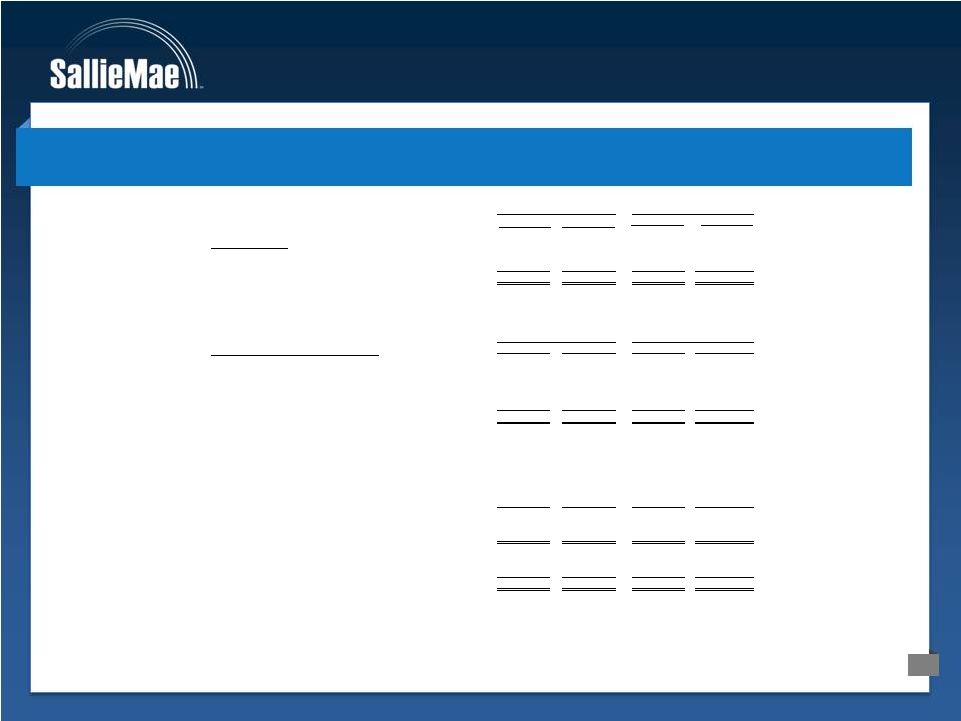2 Cautionary Note Regarding Forward-Looking Statements The following information is current as of October 22, 2014 (unless otherwise noted) and should be read in connection with SLM Corporation’s Quarterly Report on Form 10-Q for the quarter ended September 30, 2014 (the “2014 Form 10-Q”), and the audited carve out financial statements filed on Form 8-K on May 6, 2014, and subsequent reports filed with the Securities and Exchange Commission (the “SEC”). Definitions for capitalized terms in this presentation not defined herein can be found in the 2013 Form 10-K (filed with the SEC on February 19, 2014). This Presentation contains forward-looking statements and information based on management’s current expectations as of the date of this presentation. Statements that are not historical facts, including statements about the Company’s beliefs or expectations and statements that assume or are dependent upon future events, are forward-looking statements. Forward-looking statements are subject to risks, uncertainties, assumptions and other factors that may cause actual results to be materially different from those reflected in such forward-looking statements. These factors include, among others, the risks and uncertainties set forth in Item 1A “Risk Factors” and elsewhere in the Company’s Annual Report on Form 10-K for the year ended Dec. 31, 2013 (filed with the SEC on Feb. 19, 2014) and the Company’s Quarterly Report on Form 10-Q for the quarter ended June 30, 2014, and in the company’s Quarterly Report on Form 10-Q for the quarter ended Sept. 30, 2014; increases in financing costs; limits on liquidity; increases in costs associated with compliance with laws and regulations; changes in accounting standards and the impact of related changes in significant accounting estimates; any adverse outcomes in any significant litigation to which the Company is a party; credit risk associated with the Company’s exposure to third parties, including counterparties to the Company’s derivative transactions; and changes in the terms of student loans and the educational credit marketplace (including changes resulting from new laws and the implementation of existing laws). The Company could also be affected by, among other things: changes in its funding costs and availability; failures of its operating systems or infrastructure, including those of third-party vendors; failure to implement the recently executed separation of the Company into two separate publicly traded companies, including failure to transition its origination and servicing operations as planned, increased costs in connection with being a stand-alone company, and failure to achieve the expected benefits of the separation; damage to its reputation; changes in the demand for educational financing or in financing preferences of lenders, educational institutions, students and their families; changes in law and regulations with respect to the student lending business and financial institutions generally; changes in banking rules and regulations, including increased capital requirements; increased competition from banks and other consumer lenders; the creditworthiness of its customers; changes in the general interest rate environment, including the rate relationships among relevant money-market instruments and those of its earning assets vs. its funding arrangements; and changes in general economic conditions. The preparation of the Company’s consolidated financial statements also requires management to make certain estimates and assumptions including estimates and assumptions about future events. These estimates or assumptions may prove to be incorrect. All forward-looking statements contained in this release are qualified by these cautionary statements and are made only as of the date of this release. The Company does not undertake any obligation to update or revise these forward-looking statements to conform the statement to actual results or changes in its expectations. In connection with the Navient spin-off, the Company conformed its policy with that of Sallie Mae Bank to charge off loans after 120 days of delinquency. The Company also changed its loss confirmation period from two years to one year to reflect both the shorter charge-off policy and its related servicing practices. Prior to the spin-off, Sallie Mae Bank sold all loans past 90 days delinquent to an affiliate of what is now Navient Corporation. Post-spin-off, sales of delinquent loans to Navient Corporation have been significantly curtailed. Consequently, many of the pre-spin-off, historical credit indicators and period over-period trends are not comparable and may not be indicative of future performance. The Company reports financial results on a GAAP basis and also provides certain core earnings performance measures. The difference between the Company’s “Core Earnings” and GAAP results for the periods presented were the unrealized, mark-to-market gains/losses on derivative contracts. These are recognized in GAAP but not in “Core Earnings” results. The Company provides “Core Earnings” measures because this is what management uses when making management decisions regarding the Company’s performance and the allocation of corporate resources. The Company’s “Core Earnings” are not defined terms within GAAP and may not be comparable to similarly titled measures reported by other companies. For additional information, see “Key Financial Measures-Core Earnings” in the Company’s Form 10-Q for the quarter ended September 30, 2014 for a further discussion and a complete reconciliation between GAAP net income and core earnings. | 